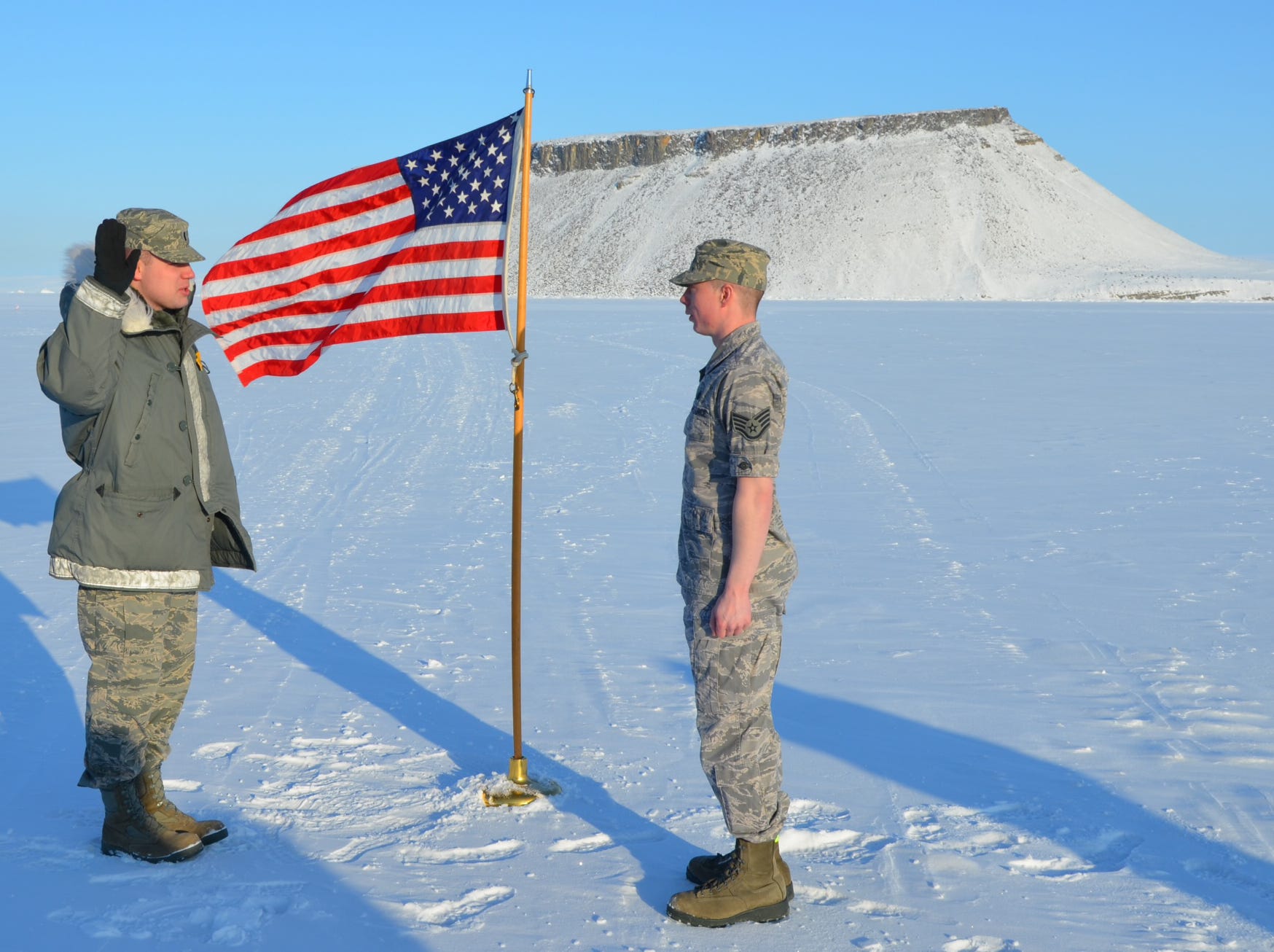U.S. Military Presence In Greenland: The Hidden Nuclear Base And Its Legacy

Table of Contents
The Cold War and the Construction of Camp Century
Strategic Location and the Nuclear Threat
Greenland's proximity to the Soviet Union during the Cold War made it a vital location for the United States. The geopolitical climate fueled anxieties about Soviet submarine activity in the North Atlantic and the potential for a nuclear strike. Establishing a military presence in Greenland was seen as crucial for several reasons:
- Early warning systems: A forward base in Greenland could provide crucial early warning of any Soviet attack, giving the U.S. precious time to respond.
- Monitoring Soviet submarine movements: Greenland's strategic location allowed for enhanced surveillance of Soviet submarine activity in the region.
- Potential for a nuclear strike: The U.S. needed to be prepared for a potential nuclear attack from the Soviet Union, and Greenland's position offered a crucial strategic advantage.
The Secret Nuclear Base: Camp Century's True Nature
Initially presented as a research facility studying Arctic conditions, Camp Century was secretly a significant military installation. This deception concealed the true nature of the project, which involved:
- Nuclear power plant: The base relied on a mobile nuclear power plant to provide electricity, highlighting the scale of the operation.
- Weapons storage: Evidence suggests Camp Century housed nuclear weapons and related equipment.
- Ice-tunnel infrastructure: An extensive network of tunnels carved into the ice was crucial to the base's functionality and secrecy. These tunnels also housed various facilities and equipment.
Environmental Impact and Abandonment
Camp Century's operations left a significant environmental legacy. The hasty abandonment of the base in the 1960s left behind radioactive waste, posing long-term environmental risks:
- Waste disposal: The disposal of radioactive waste, including spent nuclear fuel and contaminated equipment, remains a significant concern.
- Melting ice caps: The melting of the Greenland ice sheet poses risks of releasing this waste into the environment.
- Long-term environmental risks: The potential for long-term contamination of soil and water sources continues to be studied and investigated.
- Current research into contamination: Recent research projects are evaluating the extent of contamination and exploring potential remediation strategies.
Post-Cold War Activities and the Thule Air Base
Thule Air Base: A Continuing U.S. Presence
The Thule Air Base remains a significant U.S. Air Force installation in Greenland, playing a vital role in global surveillance and defense. Its key functions include:
- Satellite tracking: The base hosts powerful radar systems that track satellites and other space objects.
- Early warning systems: Thule Air Base remains a critical component of U.S. early warning systems against ballistic missile attacks.
- Missile defense systems: It plays a role in the nation's missile defense network.
- Personnel stationed: A substantial number of U.S. military and civilian personnel are stationed at Thule Air Base.
Cooperation and Tensions with Greenlandic Authorities
The relationship between the U.S. and Greenland regarding military bases is complex, marked by both cooperation and tension:
- Agreements and treaties: Existing agreements govern the U.S. military presence, but these are often revisited in light of changing circumstances.
- Greenlandic self-governance: Greenland's increasing self-governance has led to greater scrutiny of the U.S. military presence and demands for greater transparency.
- Environmental concerns: Greenland expresses growing concerns about the environmental impact of U.S. military operations and the legacy of past activities.
- Economic benefits and drawbacks: While the U.S. presence provides economic benefits to Greenland, there are also concerns about potential drawbacks and the long-term sustainability of these economic relationships.
The Future of U.S. Military Presence in Greenland
Strategic Importance in a Changing Arctic
The Arctic region is gaining increasing strategic importance due to climate change and resource exploration, influencing the U.S. military interest in Greenland:
- Melting ice: The melting of Arctic ice opens new navigable waters, creating new strategic opportunities and challenges.
- Access to resources: The Arctic holds significant natural resources, increasing geopolitical competition.
- New shipping routes: New shipping routes are opening up, impacting trade and strategic access.
- Increased geopolitical competition: The Arctic is becoming a focal point for increased geopolitical competition among major world powers.
Challenges and Opportunities for Cooperation
Navigating the future of U.S. military presence in Greenland requires addressing several challenges and opportunities for cooperation:
- Environmental cleanup: Addressing the environmental legacy of past activities, like Camp Century, is a priority.
- Economic development partnerships: Developing economic partnerships that benefit both the U.S. and Greenland is crucial.
- Strengthening diplomatic ties: Improving communication and trust between the U.S. and Greenland is essential for sustainable cooperation.
- Transparent communication: Open and transparent communication about military activities and environmental concerns is crucial for building trust and fostering cooperation.
Conclusion
The history of the U.S. military presence in Greenland, including the clandestine operations of Camp Century and the continuing role of Thule Air Base, reveals a complex interplay between geopolitical strategy, environmental responsibility, and international relations. Understanding the legacy of these bases is crucial for navigating the future challenges and opportunities in the Arctic. The ongoing discussions regarding the environmental impact of past activities and the future of the U.S. military presence in Greenland necessitate further research and transparent collaboration between the involved parties. To learn more about the multifaceted impact of the U.S. Military Presence in Greenland, explore additional resources and stay informed about ongoing developments in this strategically significant region.

Featured Posts
-
 Tatar In Sonuclandirici Aciklamalari Kibris Ve Direkt Ucuslar Uezerindeki Etkiler
May 15, 2025
Tatar In Sonuclandirici Aciklamalari Kibris Ve Direkt Ucuslar Uezerindeki Etkiler
May 15, 2025 -
 Toronto Maple Leafs Playoff Hopes Hinge On Florida Panthers Game
May 15, 2025
Toronto Maple Leafs Playoff Hopes Hinge On Florida Panthers Game
May 15, 2025 -
 Understanding The Controversy Nhl Fans React To New Draft Lottery System
May 15, 2025
Understanding The Controversy Nhl Fans React To New Draft Lottery System
May 15, 2025 -
 Boston Celtics Pardavimas Kodel Lietuviai Neisigijo Legendines Komandos
May 15, 2025
Boston Celtics Pardavimas Kodel Lietuviai Neisigijo Legendines Komandos
May 15, 2025 -
 Rbi Single In The Pinch Gurriel Leads Padres To 1 0 Win Over Braves
May 15, 2025
Rbi Single In The Pinch Gurriel Leads Padres To 1 0 Win Over Braves
May 15, 2025
